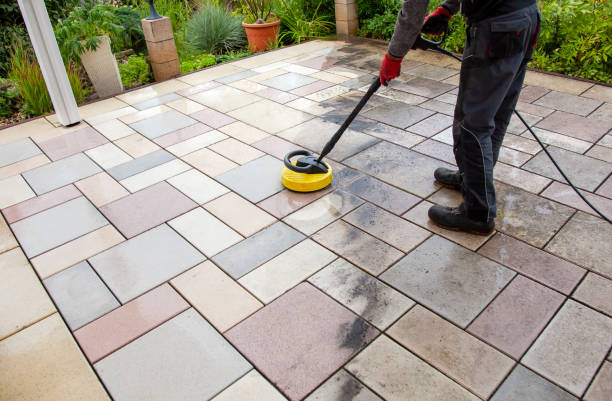Residential land clearing is a crucial step in preparing a plot of land for construction, landscaping, or other development purposes. Whether you’re building your dream home, creating a garden, or simply making space for outdoor activities, clearing the land is the first and most important step. This process involves removing trees, shrubs, rocks, and other obstacles to create a clean, level surface. In this article, we’ll explore the key aspects of residential land clearing, including its importance, methods, costs, and environmental considerations.
Why is Residential Land Clearing Important?
Residential land clearing is essential for several reasons:
Safety: Overgrown vegetation, fallen trees, and debris can pose safety hazards. Clearing the land eliminates these risks, making the area safer for construction and future use.
Preparation for Construction: Before building a home or any structure, the land must be level and free of obstructions. Land clearing ensures a solid foundation for construction.
Aesthetic Appeal: Clearing land can enhance the visual appeal of your property, making it more attractive and functional for landscaping or outdoor activities.
Improved Accessibility: Removing obstacles like trees and rocks makes it easier to access the property and move equipment or materials during construction.
Pest Control: Overgrown vegetation can attract pests like rodents and insects. Clearing the land helps reduce the risk of infestations.
Methods of Residential Land Clearing
The method of land clearing depends on the size of the property, the type of vegetation, and the intended use of the land. Here are some common techniques:
1. Manual Clearing
Manual clearing involves using hand tools like axes, chainsaws, and shovels to remove small trees, shrubs, and debris. This method is ideal for smaller properties or areas with limited access for heavy machinery. While it’s labor-intensive, it allows for precise clearing and minimal disturbance to the surrounding environment.
2. Mechanical Clearing
For larger properties, mechanical clearing is more efficient. This method uses heavy equipment like bulldozers, excavators, and skid-steer loaders to remove trees, stumps, and rocks. Mechanical clearing is faster and more effective for large-scale projects but may require professional expertise to operate the machinery safely.
3. Grubbing and Root Removal
Grubbing involves removing the roots of trees and shrubs to prevent regrowth. This step is crucial to ensure that the land remains clear and usable. Specialized equipment like root rakes and grinders are often used for this purpose.
4. Burning
In some cases, controlled burning is used to clear land. This method is typically reserved for large, rural properties with dense vegetation. However, it requires permits and strict adherence to safety regulations to prevent wildfires.
5. Mulching
Mulching is an eco-friendly method that involves grinding trees and vegetation into mulch, which can be used for landscaping or soil enrichment. This technique is ideal for properties where preserving the soil structure is important.
Factors Affecting the Cost of Residential Land Clearing
The cost of land clearing varies depending on several factors:
Size of the Property: Larger properties require more time and resources to clear, increasing the overall cost.
Type of Vegetation: Dense forests or areas with large trees are more expensive to clear than open fields with light vegetation.
Terrain: Steep or uneven terrain can make the clearing process more challenging and costly.
Accessibility: If the property is difficult to access, special equipment or additional labor may be required, driving up costs.
Disposal of Debris: The cost of removing and disposing of cleared vegetation and debris can vary depending on local regulations and disposal methods.
Permits and Regulations: Some areas require permits for land clearing, especially if it involves protected species or environmentally sensitive areas. Permit fees and compliance costs can add to the overall expense.
On average, residential land clearing costs range from
1,500to
1,500to5,000 per acre, but this can vary widely depending on the factors mentioned above.
Environmental Considerations in Residential Land Clearing
While land clearing is necessary for development, it’s important to consider its environmental impact. Here are some ways to minimize harm to the ecosystem:
Preserve Natural Features: Whenever possible, retain natural features like mature trees, water bodies, and wildlife habitats. These elements enhance the property’s value and contribute to biodiversity.
Erosion Control: Clearing land can expose soil to erosion. Implementing erosion control measures, such as planting ground cover or installing silt fences, can prevent soil loss and protect nearby water sources.
Sustainable Practices: Use eco-friendly methods like mulching or selective clearing to reduce waste and promote soil health.
Comply with Regulations: Follow local environmental regulations and obtain necessary permits to ensure that your land clearing activities are legal and sustainable.
Replanting: After clearing, consider replanting native vegetation to restore the ecological balance and improve the property’s aesthetics.
Hiring Professionals vs. DIY Land Clearing
While some homeowners may consider clearing their land themselves, hiring professionals is often the better option. Here’s why:
- Expertise: Professional land clearing companies have the knowledge and experience to handle complex projects safely and efficiently.
- Equipment: They have access to specialized equipment that may not be available to homeowners.
- Time-Saving: Professionals can complete the job much faster than a DIY approach.
- Compliance: They are familiar with local regulations and can ensure that the project complies with all legal requirements.
However, if you have a small property and the necessary skills, DIY land clearing can be a cost-effective option. Just be sure to prioritize safety and follow best practices.
Conclusion
Residential land clearing is a vital step in transforming a raw piece of land into a functional and beautiful space. Whether you’re preparing for construction, landscaping, or simply improving your property, understanding the process, costs, and environmental considerations is essential. By choosing the right method and working with professionals when needed, you can ensure that your land clearing project is successful, safe, and sustainable. Remember, a well-cleared property not only enhances its value but also provides a solid foundation for your future plans.

